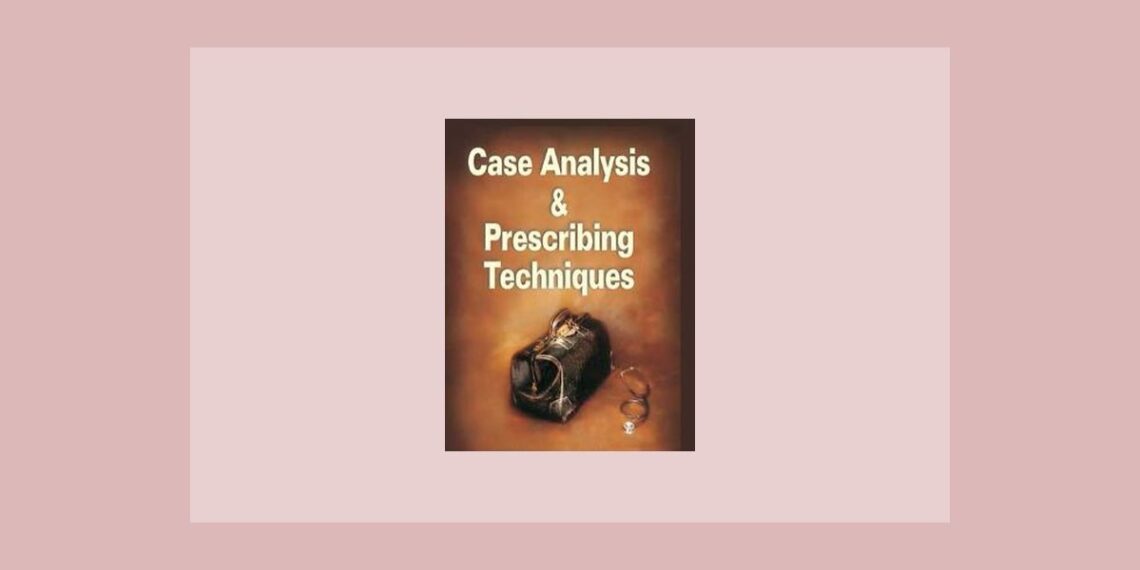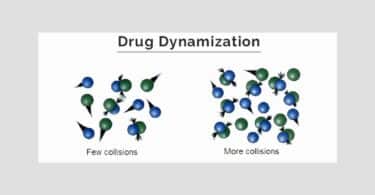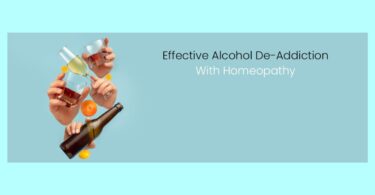Excerpted from one of Dr. Ajit Kulkarni’s international seminars, where he was asked about intercurents.
Dr. Vikulov asks about intercurrents: The idea of intercurrent prescribing is mentioned in the works of many homeopaths as practical counsel for the dilemma of “What to do if nothing helps any more”. The situation when intercurrent prescribing is recommended perfectly fits the case of decreased sensitivity and decreased susceptibility on the background of generally decreased vital force, long-lasting or permanent suppression or a constantly acting etiologic factor. In your book on posology you recommend giving frequent remedies in low or medium potencies. Your also propose giving an intercurrent remedy. This leads me to some confusion. In the examples, you suggested prescribing Tuberculinum, Thuja or DNA for certain clinical conditions. It seems that the remedies are prescribed without taking into consideration the law of similars. They are prescribed as isopathic remedies, like Tyler and Foubister sometimes used. Do these tactics fit the basics of homeopathy? Foubister used to finish a presentation of his cases by stating “The patient got better, the complaint disappeared for a while”. But I never heard whether prescribing of intercurrent remedies was confirmed clinically by Herring’s law. Thus, I wish to understand the reasons for basing your prescription on the intercurrent.
INTERCURRENT PRESCRIBING
Plan of presentation
- Introduction
- Objective
- Problems
- General Indications
- Clinical confrontations
- How to select & use Intercurrent Remedies
- Prominent Intercurrent Remedies
- Phase considerations
- Cautions
- Benefits
Introduction
Dr. Vikulov begins with the Kali family book where intercurrent prescribing (IP) has been mentioned in a brief way. Then he goes to the Posology book and asks if I am going against the law of similars and Hering’s Law. I don’t accept that there are laws of Hering. Laws are related to the universe. Hering put forward what he observed. These observations gave suggestive guidance to physicians.
I have cited some examples under intercurrent prescribing as I have cited under other relations. These are the examples and not rigid rules. If my commentary on remedy relations is read carefully, Dr. Vikulov will find that I have already clarified this issue. I quote from my book, ‘The relationship section is not a product of proving, as proving yields raw/dissonant / incongruous / inconsistent / paradoxical and divergent symptomatology. Relations have a suggestive value, based on experience and interpretation of the remedial function. The relations which are shared or the statements under relationship are not solid facts, incontrovertible as of proving’.
There are 3 examples I have given under “intercurrent prescribing”.
1. Tuberculinum in a case of pneumonia with delayed resolution or in a case of recurrent pneumonia.
2. Thyr. in a case of urticaria with a family h/o thyroid disorder.
3. D.N.A. in a case of inveterate psoriasis.
In all these examples it is expected that a prescriber perceives the state in its true spirit, the state of no response, even after careful prescribing and a host of factors may be responsible for the ‘adynamia’ stage. It is from dealing with these factors that IP originated. The intrinsic and extrinsic factors and their role in the genesis and development of diseases have a ‘dynamic’ aspect on the constitution as a whole. What other name you would like to assign when you are confronted with a number of cases where well-indicated remedies fail and IP, for example, based on family history unlocks them?
In the examples cited above, it is expected that the user select a remedy on the basis of indications. They could be at the level of physical generals, mental generals (including causative emotional modalities), physical particulars, causative, miasmatic, essence, theme, soul, personality, evolution of a disease process, past history, family history, drug miasm etc.
But the crux of the problem is when there are no sound indications and you are confused. You have been trying to fish out the most similar remedy by taking into account many layers and levels and yet no recovery occurs. You have tried amply, with many remedies and in various potencies, yet the patient is not on the road of recovery. Your state is confounded! IP, in such cases, has a definitive place in practice.
The concept of IP is not so easy to explain in simple ways; it requires 5-6 pages or more in a theoretical way and many years of practice in a practical way. The concept of intercurrent prescribing is purely in line with the law of similars and Hering’s suggestions of the curative path. It is necessary to first study why it developed. The answer resembles the miasmatic concept of Hahnemann. It was compelling on the part of Hahnemann to develop this theory as even after 12 years of practice, there were failures and those were even after appropriate application of the law of similars. And Hahnemann’s theory of miasms did receive scathing attacks from Hering and others. Hering had a question: ‘If totality of symptoms is the only guide for selecting the simillimum, why go for this theory?’
It is necessary to understand that every concept in homeopathy has developed out of needs, given the wide dimensional spectrum of homeopathy. Homeopathy is a human medicine and to understand it requires a myriads of tools. But we must remember that every concept has its own scope and limitation.
Intercurrent prescribing fills the gap caused by insufficient data presented by patients, unsatisfactory coverage of miasmatic background by the remedies prescribed, to incomplete knowledge of materia medica, an incomplete clinical picture and so on. It’s not so simple that you get the totality in every case. Even if you have a quantitative totality, it carries less significance, as what is needed is a qualitative one. Further, even if the data is qualified, it has to be processed in a right manner. There are many missing links in the data of the patient and they do not come to the surface due to ‘n’ number of forces. The human being is a dynamic entity and a constant activity-reactivity pattern is exhibited by the system in response to environmental stimuli. The pattern of energy is variable and erratic in many individuals and it may cause turbulence in the system. There is ‘dynamic’ similarity too. This aspect of homoeopathic clinical practice is a very individualistic perception and it can’t be put into words in an adequate manner. There is an individual perceptual filter specific to each physician in homoeopathic practice and it does play a role in intercurrent prescribing.
The concept of a single remedy and minimum dose are the bedrock of homoeopathic posology. But it doesn’t mean that ‘one dose and finish’ occurs in every case. Everyone feels that with one dose of a remedy every disease should be cured but this could be a delusionary expectation. (The readers are advised to study my article on Repetition from the ‘Homoeopathic Posology’ book.).
I reiterate that IP has to be used when well indicated remedies fail and the system is stuck. The following write-up about IP should be studied from this context.
1. Objective:
- Ø Arousing the vitality to steer the system towards recovery.
2. Problems:
- Does the prescription of an intercurrent when used with an acute or chronic violate the principle of a single remedy?
- Is a single remedy sufficient to cure all cases of human illness?
- Is a single remedy the only one needed from birth to death?
- Is it against the law of similars?
- Is it against Herring’s suggestions of the curative pathway?
- If apparent similarity is not achieved, is the prescription of the intercurrent legitimate?
- What is central similarity? Peripheral similarity? Dynamic similarity? What is the role of the intercurrent in each of them?
- Is intercurrent prescribing based on adequate philosophy or is it a shortcut in clinical practice?
3. General Indications for the use of intercurrents
- Poor/ slow/ inadequate/ short lasting/ superficial response to the indicated constitutional remedy
- Inadequate similarity
- Inadequate potency
- Inadequate repetition
- Genetic load ++
- Dominant miasm is ‘active’ and the system depressed
- Morbid Constitution …..Diathesis
- Energy reservoir- poor
- ‘Indolent’ system
- ‘Sycotic’ dominance
- Suppression
4. Indications based on clinical data
1. Paucity of Prescribing data
- Ø One sided diseases
- Ø Low sensitivity
- Ø Low susceptibility
- Ø Pathognomonic symptoms+ and Individual features
- Ø Advanced pathological state(s) (Pathological museum)
- Ø Suppression
- Eruptions
- Discharges
- Emotions
- Susceptibility (drugs, steroids, chemotherapy etc.)
2. Depressed immunity
Immuno-suppressive agents, pain-killers, antibiotics, steroids etc. which are known to alter sensitivity and susceptibility of the patients.
3. ‘Obscure case’ or ‘image’
- An obscure case is one which is not ‘even’ or balanced in all the dimensions / facets.
- Lop-sided not pointing to any one remedy.
- Heterogeneous data.
- Repertorization not yielding a clear portrait.
4. Partial sectors merging with the constitutional remedy
- The generals are brought into play even at the sector level(s)
- The constitutional remedy helping partially.
- The sector totality is devoid of individualizing characteristics
5. Poor resistance to acute infections
- Acute fulminating, toxic infections
- Infections developing in vital organs viz. brain, heart, kidneys, liver etc.
- The system has become a ‘prey’
- Investigatory parameters exorbitant
- Disturbed, perverted metabolism
- Tubercular and syphilitic miasmatic dominance in infections
6. Frequent relapses, periodic recurrence of complaints
- Allergic diathesis
- Hypersensitive pattern under miasmatic influence
- The system getting depressed and depleted after relapses / recurrences / recrudescence
7. Short lasting / superficial responses in acute exacerbations of a chronic disease with a rigid course
- Example: Tropical eosinophilia, Rheumatoid arthritis, Schizophrenia etc. Slow then sudden rapid development of a disease e.g. Enteric case (i.e. typhoid) where first slow-insidious development, then toxic response (as in Baptisia).
8. Acute, rapidly progressing disease
- An intercurrent remedy has to be given, sometimes frequently.
- Example: In whooping cough, if no response to indicated remedies like Drosera, Cuprum-met etc. Tub-bov.1M can be given daily one dose at bed-time, say for 3 or 5 days and then wait and watch.
9. “Acute on chronic” where vitality is good but there is poor response to indicated remedy(s)
- Example: A case of leukemia where bleeding is not responding, Tuberculinum can be given in a frequent repetition schedule (of course with cautiousness and ‘wait and watch’ approach.)
10. Non-developing / tardy / slow development of disease process
- Example: Exanthemata not developing in spite of good prescribing and the system totally in the grip of an infection, one can go for Sulphur 1m or 10m every two hours till the appearance of rash.
11. Poor recovery, prolonged convalescence in acute conditions
- The system has come out of acute illness but recuperation is slow.
- After every acute episode, sequelae / residual effects/ complications.
12. Definite expressions of the Miasmatic activity either not regressing with the indicated drug or appearing in the course of treatment of a case
- Example: Talking or grinding of teeth during sleep occurring every few days in a case of recurrent upper respiratory tract infection. These are tubercular miasmatic expressions and Tuberculinum often helps.
13. Weakness spells occurring in a person with recurrent infection, for example, tonsillitis
- Example: Psorinum, in recurrent infections with extreme debility.
14. Well-defined totality depicting a particular miasm at sector and / or general level
- A case of pulmonary T.B. Patient lean, thin, slender. Recurrent haemoptysis, tendency to catch cold. White spots on nails. Violent anger. F/H – TB. Tuberculinum 1M as an opener.
15. On the basis of
- Family history
- Past history
- History of drugs
- Remote cause(s)
Maintaining cause
- If the patient is consuming some allopathic drugs, this has a bearing upon the immune system. In addition to the constitutional remedy, one can prescribe tautopathic drugs intermittently to antidote the ill effects.
- Example: Radiation for Ca treatment. One can select a remedy from the radium group like Radium – Ars/ phos/ iod/ brom etc. for antidoting the ill-effects of radiation.
5. How to select and use an intercurrent?
- In the presence of the above indications, a specific intercurrent is selected on the basis of similarity.
- It is expected that an intercurrent remedy must be complementary to the previous remedy and it must be deeper-acting too.
- In especially chronic cases, more than one intercurrent may be needed depending upon the unfolding of the miasmatic expressions.
- In determining potency selection and repetition schedule of IR, it should be based on standardized criteria of 9 components as presented in the Posology book. Experience favors high potency in infrequent doses.
6. Prominent Intercurrent Remedies
1. Anti-psoric: Sulphur, Psorinum, Ambra-grisea. “The broadest anti-psoric nosode par excellence is not Psorinum, but Tuberculinum.”(Whitman).
2. Anti-sycotic: Thuja., Natrum sulphuricum, Medorrhinum, Calcarea carbonicum
3. Anti-tubercular: Tuberculinum, Phosphorus, Iodum, Drosera
4. Anti-syphilitic: Syphilinum, Mercurius, Nitric acid, Carcinocinum
5. Other remedies: Carbo veg, Opium, Laurocerasus, Zincum metallicum, Ammonium carb, Valeriana
7. Phase consideration
- Clear-cut phases in the evolution of patient’s illness, demarcating from the original constitution by virtue of time and expressions, which show the deviated responsiveness approximating to a full-blown miasmatic picture, with specific characteristics also being present.
Phase interpretation is important for intercurrent prescription.
8. Cautions
1. Don’t use intercurrent remedial force as a ‘desperate weapon’ without a proper ‘indicated main-current.’
2. If one is not sure of the acute / chronic similarity level, do not use the intercurrent force; it is premature to use them and quite often useless, too.
3. Control its use as per the assessment of the degree of the miasmatic activity, the presence of pressing indications and definitive specific features, and the response elicited by first dose of the remedy.
- Accurately update the plan of its use as per the response analysis.
4. The nosodes as intercurrent are known also to give rise to dangerous effect of stimulating unwanted reactions also.
- Examples: Tuberculinum in TB cases or Carcinosin in active malignancy. A killer homoeopathic aggravation can develop especially with repetitive doses of nosodes.
5. Better not to give it out of phase (timing)
- In recovering acute infection.
- During as acute exacerbation at the time of menses.
- Before constitutional treatment is a convalescence phase.
- Before paroxysms of a periodical illness.
- Unless there are extraordinary pressing indications.
- Haphazard repetition of intercurrent remedies should be avoided.
- Avoid in advanced pathological cases. They sometimes may cause stimulations which the system may not be able to tolerate.
9. Benefits:
- Like a rescue remedy.
- Clinico-pathological and miasmatic co-relations understood well.
- Clarity at ‘operational’ level.
- Justification of ‘dynamic’ similarity.
- Releasing the action of a remedy at the deeper level of morbid constitution/diathesis.
- Removing the causa morbis – acute or remote- that keeps a mark/impression over the system.






a very nice, detailed explanation given by Ajit Sir, worth careful reading over and over again. This article will be very useful for student too especially for exam material.
Excellent article. I especially agree on the need for for IP in advanced pathological states. I have had very good results using Viscum album intercurrently in cancer cases, especially when the patient is undergoing chemo and radiation.
DEAR DR SCIENCE IS PROGRESSIVE AS PER THE NEED OF TIME AND HUMANITY. SO HAHANEMANN EXPERIMENT WITH ONE REMEDY CANNOT ALWAYS BE CONTINUED. SO TO USE SINGLE REMEDY AND USE INTERCURRENT AND COMPLEMENTARY REMEDIES ARE BOTH SCIENTIFIC AS PROVED BY MANY RENOWN HOMEOPATHS IN THEIR USE. .EVEN HAHANEMANN STATED TO HAVE USED TWO REMEDIES AS MENTIONED IN LAST WRITINGS TODAY HOMEOPATHS ARE USING HOMEO REMEDIES ALONG WITH ALLOPATHIC REMEDIES. SO WE NEED TO DO MORE EXPERIMENTS ALONG WITH CLASSICAL ONES
THANKS
A very well-explained article! Thank you, Dr. Kulkarni!
Very good article from the point of the subject it deals.Dr.Kulkarni has raised a very very controversial subject. Even deep understanding of Homeopathy or Hahnemann’s mind itself wouldn’t yield a satisfactory answer. But Nature makes the rule here. prescribing is a process of decision making. homeopathic prescribing unlike other systems is like a game of Chess, make a move and wait for the counter move of your opponent before deciding the next step.a pre-planned treatment is guaranteed to fail. ability to read the symptoms and intervene at the right time is hence essential.
If we reason that whatever good for an acute case must be good for a chronic one too, the procedure or protocol (but not a planned protocol by any means for the above reasons.) adopted for treating acute & sub-acute cases including emergencies tell us that such intercurrent remedies are not only necessary but as in failure to follow up Veratrum Album with Arnica or Camphora as the case may be shock or cholera respectively, could definitely amount to negligence causing fatalities. If we follow this rule – which the stalwarts of homeopathy advised as “second remedy to be given & not until there is a second definite cry for help”- in chronic diseases too the procedure is same except the inter current/second remedies to be spaced proportionately wider with the chronicity of the case.